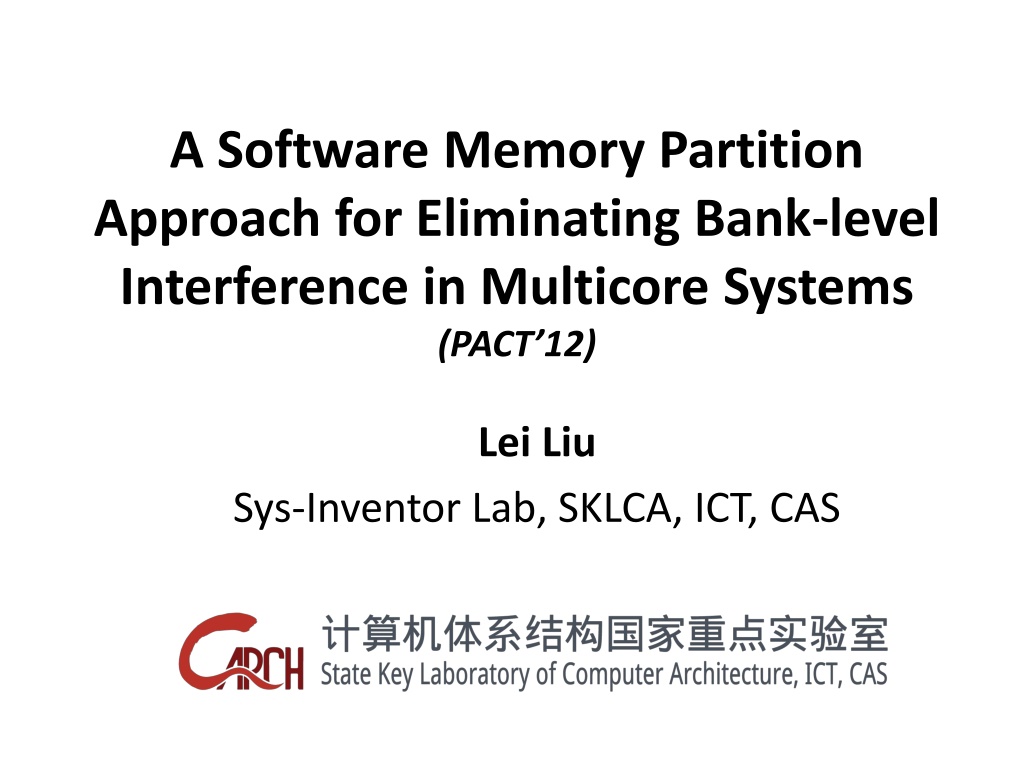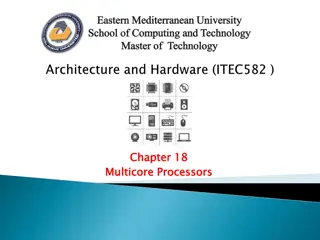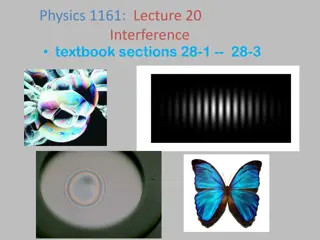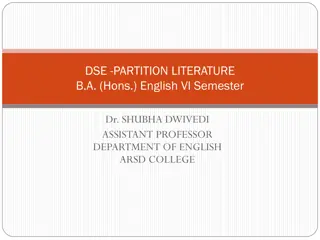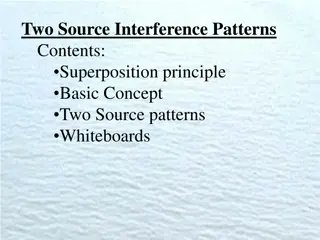A Software Memory Partition Approach for Eliminating Bank-level Interference in Multicore Systems
Memory requests from different threads can cause interferences in DRAM banks, impacting performance. The solution proposed involves partitioning DRAM banks between threads to eliminate interferences, leading to improved performance and energy savings.
Download Presentation

Please find below an Image/Link to download the presentation.
The content on the website is provided AS IS for your information and personal use only. It may not be sold, licensed, or shared on other websites without obtaining consent from the author. Download presentation by click this link. If you encounter any issues during the download, it is possible that the publisher has removed the file from their server.
E N D
Presentation Transcript
A Software Memory Partition Approach for Eliminating Bank-level Interference in Multicore Systems (PACT 12) Lei Liu Sys-Inventor Lab, SKLCA, ICT, CAS
Executive Summary Observations: -- Memory requests from different threads potentially interleave across all banks, which cause interferences -- The necessary amount of banks one program requires is limited, and more banks cause more interferences Problem: More unnecessary banks & Interleaving more interferences lower performance Solution: Partitioning DRAM banks between threads Result: Eliminating interferences on bank-level between threads, and saving energy
Outline Background & Motivation Our Goal BPM: Bank-level Partitioning Mechanism Results Conclusion
Organization of shared memory system ... Core 0 Core 1 Core 2 Core N Shared Memory System Shared Cache Memory Controller On-chip Off-chip Chip Boundary ... DRAM Bank 0 DRAM Bank 1 DRAM Bank 2 DRAM Bank K
Interleaved Memory Access Two Level Interleaving: Channel, and Bank Interleaving Bank1 Bank2 Cache Line Cache Set Main Memory Channel 1 Channel 2 BW Last Level Cache Bank1 Bank2
Memory accessing of diff. threads Random Stream Row-Buffer Row-Buffer Row-Buffer Row-Buffer Bank4 Bank3 Bank1 Bank2
Interferences on DRAM Banks --Unfairness Random Stream Unfairness 1.1X vs. 11X+ 4X latency Row-Buffer Row-Buffer Row-Buffer Row-Buffer Bank4 Bank3 Bank1 Bank2 Random Threads always suffer an unfairness problem
Interferences on DRAM Banks -- Conflicts Row-Buffer Conflicts -- More serious in multi-core platforms -- Thrashing in row-buffer degrades performance -- Hardly to be eliminated at the root Row-Buffer 2 times Thrashing of Row 1: increases latency Bank
Previous Solutions Most previous studies focus on memory scheduling algorithms. Few researchers realize the phenomenon that all banks are shared by all cores by interleaving Leading to more interferences between threads Causing more serious conflicts on multicore platform Can we propose a practical approach to eliminate Row-Buffer conflicts between threads?
Our Goal A practical software approach for eliminating Bank-level Interferences -- Without any hardware modification to MC -- Could be deployed on real system easily -- Improves both fairness and system throughput -- Saves energy consumption of memory system
Outline Background & Motivation Our Goal BPM: Bank-level Partitioning Mechanism Results Conclusion
Page-Coloring Partitioning Approach Page-coloring technique has been proposed to partition cache. Four-way Associativity Physical address Frame No. Page Offset 00 Thread 1 01 Cache Sets Thread 2 10 Thread 3 Cache Set Bits 11 Thread 4
Bank bits in PFN Some bits in page frame number (pfn) denotes the bank address We could extend page- coloring to partition banks DRAM Banks
Partitioning banks into groups Banks are colored into diff. groups Thread 2 Thread 3 Thread 1 DRAM Banks Reducing the available amount of banks that one thread can access
The necessary bank amount Will this influence performance? The necessary amount of banks one program requires is limited
Address Mapping Challenges The idea is straightforward, but in practice the mapping from physical address to DRAM banks is not fixed. Challenge: How to figure out accurate bank bits? -- MC always supports various address mapping -- Vendors manuals offer infor. -- Diff. DRAM hardware determines diff. mapping
Bank-level Partition Mechanism (BPM) Implementation: adopt page-coloring base BPM in Linux kernel 2.6.32 by modify its buddy system. group free pages into 32 colors. Adjust the page allocation algorithm in OS.
Outline Background & Motivation Our Goal BPM: Bank-level Partitioning Mechanism Results Conclusion
Experiment environment System Configuration -- 4-core/8-thread Intel Core i7-860 CPU 2.8GHz -- LLC: 8MB/16 ways of associativity Memory Configuration -- Micron DDR3-1333 -- 2 Channel, 8 Ranks, 64 Banks Workloads -- 23 benchmarks from SPEC CPU 2006 (Multi-Program) -- PARSEC (Multi-Thread)
Experimental Results System throughput : 4.7% (up to 8.6%) Maximum slowdown: 4.5% (up to 15.8%) Memory Power : 5.2%
Row-buffer miss rate Reduced row buffer miss by BPM depends on workloads features (5%~10%)
What affects the BPM? Average(RBL) Sum(BW) Stdev(RBL) Sum(BW)*Stdev(RBL) Sum(BW)*Stdev(RBL) works well as a predictor of the effectiveness of BPM
BPM and Per-core Bandwidth BPM is promising for future multi-/many-core platforms that have even less per-core bandwidth
BPM for Multi-threaded Streamcluster from Parsec 2.0 Partition the input data by a straightforward way The improvement is less than Multi-Programmed -- 1.7% and 2.3% on 4/8-threaded separately -- Because there are too much shared data Our future work will study these issues
Conclusion Observations: -- Serious Interferences in multi-core platform -- The necessary amount of banks is limited Problem: Interferences cause lower performance BPM: Partitioning banks between threads -- Easily implemented and deployed in reality -- Without any modifications to hardware -- Benefits various of workloads Result: Improving overall system performance and saving energy
A Software Memory Partition Approach for Eliminating Bank-level Interference in Multicore Systems Lei Liu, Zehan Cui, Mingjie Xing, Yungang Bao, Mingyu Chen, Chengyong Wu
Open-page w/ BPM VS. Close-page Upper to 11% AVG. 6.2% Close-Page w/o BPM BPM revives Open-page on Multicore platforms
Observation 2 Some bits in address mapping method of memory controller denotes the bank address We could extend page- coloring to Partition banks DRAM Banks
Overview of Our Mechanism CMD A A A P R P R R D DATA D D CMD A A R R R D DATA D D Saved Cycles A: Active R: Read P: Precharge D: Data Row-Buffer Row-Buffer Row-Buffer Row-Buffer thrashing x2 times Bank1 Bank2 Bank1
